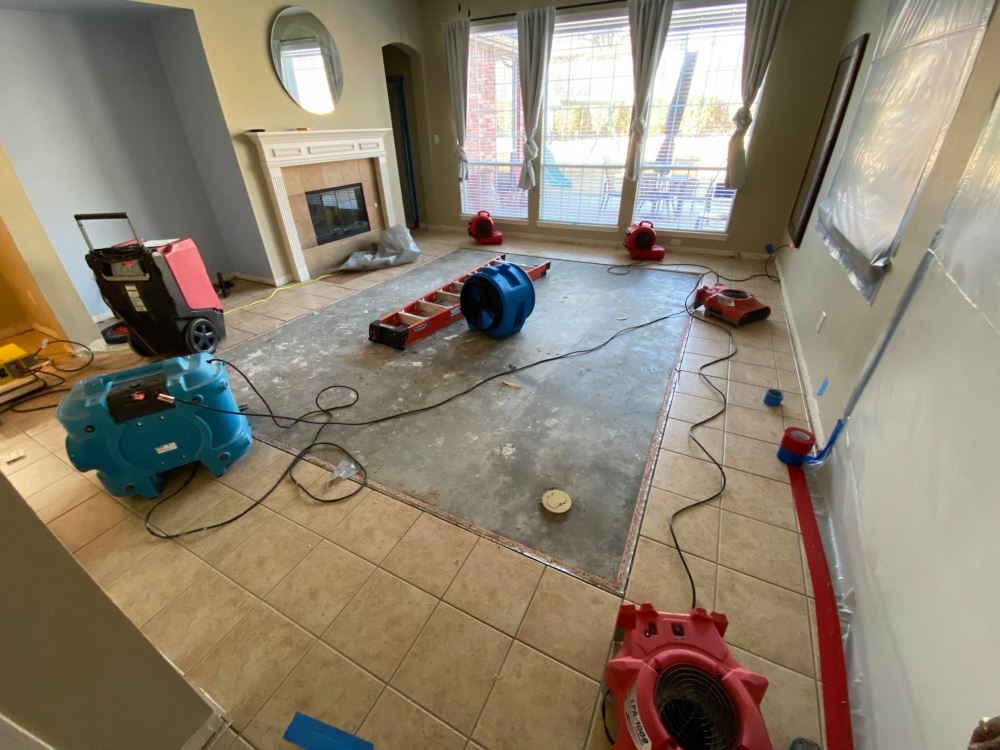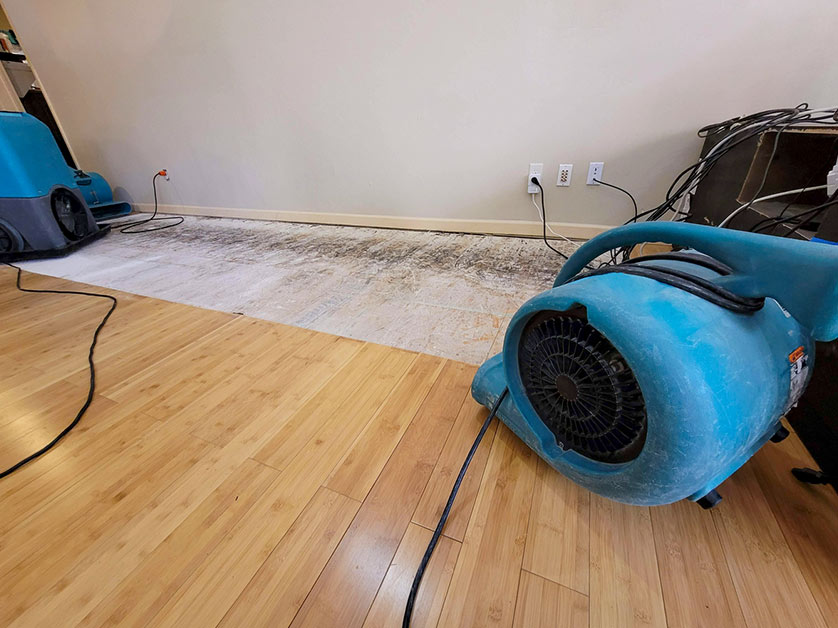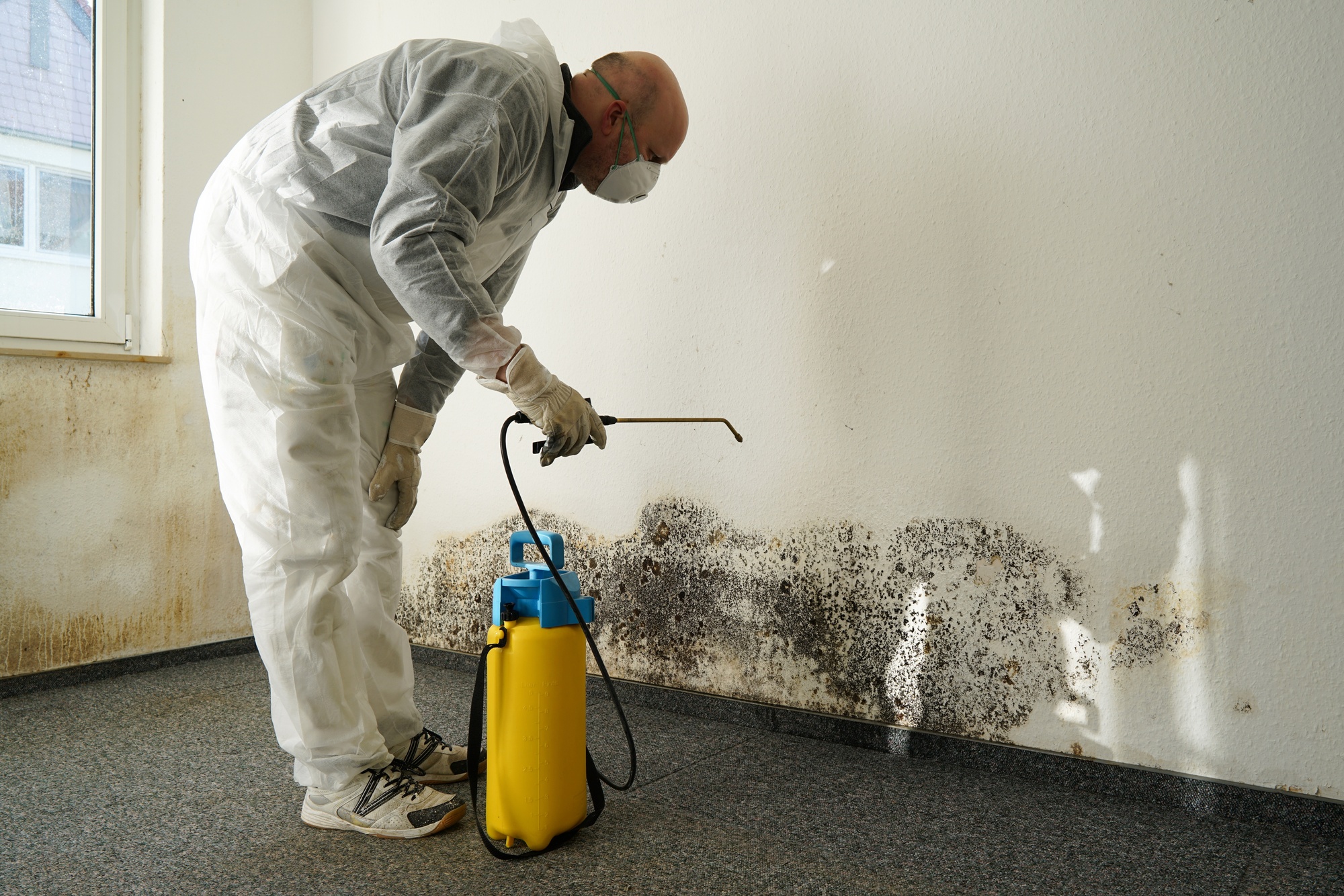Before and after professional Water Damage Restoration
Water Damage Restoration 101: Recognizing the Process and Price
Water damage can strike all of a sudden, leaving house owners in a state of complication. Recognizing the remediation process is vital for efficient healing. From examining the damage to selecting the appropriate service supplier, each action impacts the total outcome and price. Elements such as the sort of water damage and seriousness also play a considerable role. What are the particular techniques used in restoration, and exactly how can one plan for potential expenditures?
Types of Water Damage

Preliminary Evaluation and Examination

Water Extraction Techniques
Adhering to the preliminary assessment, reliable water removal techniques are used to reduce damage and prevent more concerns. These strategies involve the usage of specific equipment such as completely submersible pumps and industrial-grade vacuums - Water Damage Restoration. The selection of approach depends on the quantity of water present and the sort of products affected. For standing water, submersible pumps are commonly used for quick removal, while vacuums are excellent for extracting water from rugs and upholstery. In addition, progressed methods like water removal mats may be utilized for hard-to-reach areas - Flood Cleanup Services. The objective is to remove as much water as feasible, reducing the possibility for mold development and architectural damage. Trigger and effective water removal is necessary in the total water damage remediation procedure
Drying and Dehumidification Process
Once the water extraction is complete, the drying and dehumidification procedure ends up being essential to bring back the afflicted area. This phase normally uses industrial-grade dehumidifiers and air movers to successfully decrease moisture levels. The dehumidifiers draw in moist air, removing excess humidity, while air moving companies distribute air to increase evaporation. Tracking tools is frequently used to track moisture and temperature levels, making certain optimal drying out conditions. The duration of this procedure can differ relying on the degree of the water damage and environmental elements. It is vital to thoroughly completely dry all influenced materials, including walls, flooring, and home furnishings, to page stop mold growth and architectural damage. Appropriate implementation of this action is important for an effective reconstruction end result.
Cleaning Up and Sanitizing Damaged Locations
When the drying out procedure is complete, a complete preliminary analysis and examination of affected locations is crucial to recognize contamination degrees. Reliable cleaning methods and appropriate products have to after that be used to get rid of particles and spots. Sanitization and sanitation methods are vital to ensure that damaging virus are eliminated, bring back the area to a safe problem.
Preliminary Assessment and Examination
Before beginning any kind of remediation efforts, a complete initial analysis and assessment of the influenced locations are important for efficient cleansing and disinfecting. This procedure entails identifying the degree of water damage, establishing the resource of the water intrusion, and evaluating the materials affected. Assessors usually look for indicators of mold and mildew growth, structural integrity issues, and harmed items. The analysis additionally includes checking dampness degrees utilizing customized devices to guarantee no hidden water pockets stay, as these can lead to additional difficulties. Documenting the findings is vital for preparing the following action in the remediation process. An in-depth first analysis allows restoration experts to design a targeted approach for efficient cleansing and sterilizing, inevitably decreasing damage and wellness dangers.
Cleansing Strategies and Products
Reliable cleansing and sterilizing of water-damaged locations call for a range of items and methods tailored to the particular products influenced. For permeable surface areas like drywall and carpets, removal approaches are essential to remove excess wetness, complied with by deep cleaning with specialized detergents. Non-porous materials such as tile or steel can be cleansed utilizing commercial-grade cleansers that successfully remove impurities. Heavy steam cleaning is one more efficient technique, particularly for carpets and furniture, as it makes use of heats to remove microorganisms and mold and mildew (Flood Cleanup Services). Furthermore, green items are significantly prominent for their safety and effectiveness - Water Damage Restoration. Inevitably, picking the appropriate cleaning approaches and products not only assures instant cleanliness yet additionally help in protecting against more damage and carcinogen related to water breach
Sanitization and Disinfection Techniques
When dealing with water damage, proper sanitization and sanitation methods are important to ensure the safety and security and health of the damaged atmosphere. After first cleansing, surfaces should be treated with appropriate anti-bacterials to get rid of virus, mold, and microorganisms that prosper in moist conditions. Common techniques include the usage of EPA-approved chemical disinfectants, which can be used via spraying or wiping techniques. In addition, ultraviolet (UV) light systems can efficiently sterilize areas by reducing the effects of bacteria without rough chemicals. The selection of approach commonly depends on the kind of materials impacted and the level of contamination. Ultimately, detailed sanitization not only brings back a secure living area yet also helps protect against future health and wellness dangers connected with remaining wetness and mold growth.

Repairs and Restoration Options
Examining the damage brought on by water exposure is important for determining the suitable repair work and repair choices. House owners might deal with various issues, including harmed drywall, distorted flooring, and endangered structural elements. Depending on the degree of the damage, repair services might entail changing areas of drywall, mounting brand-new flooring, or strengthening architectural light beams. In instances of extreme damage, full substitute of damaged materials may be needed. In addition, specialist conservators usually advise utilizing moisture meters to assess concealed moisture degrees prior to picking the ideal training course of action. It is necessary to act quickly to stop mold and mildew growth and additional degeneration. Picking the appropriate alternatives not only restores the residential or commercial property but likewise ensures long-term safety and security and performance.
Variables Influencing Restoration Costs

The degree of water damage straight impacts the repair sets you back property owners can anticipate to incur. Aspects such as the source of the water, the duration of direct exposure, and the affected products greatly affect rates. Clean water damage from a damaged pipeline is typically much less costly to bring back contrasted to damage caused by sewer. Furthermore, the level of contamination dictates the need for specialized cleaning and disposal solutions, even more raising costs. Geographical place likewise contributes, as local labor prices and schedule of remediation services can vary. The urgency of the reaction impacts expenses; quicker interventions commonly lead to decrease total expenditures by preventing further damage. Understanding these factors is vital for house owners when estimating reconstruction costs.
The three main types of water damage are categorized based on contamination degrees: clean water, grey water, and black water. A detailed first analysis and assessment are crucial actions in the water damage remediation process. For standing water, submersible pumps are generally utilized for quick removal, while vacuums are optimal for drawing out water from carpets and upholstery. The extent of water damage straight impacts the reconstruction costs property owners can expect to sustain. Clean water damage from a broken pipeline is typically less pricey to bring back compared to damage created by sewer.